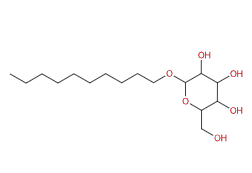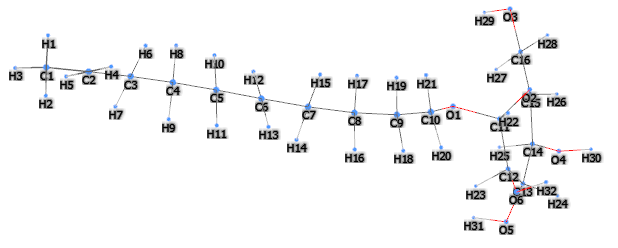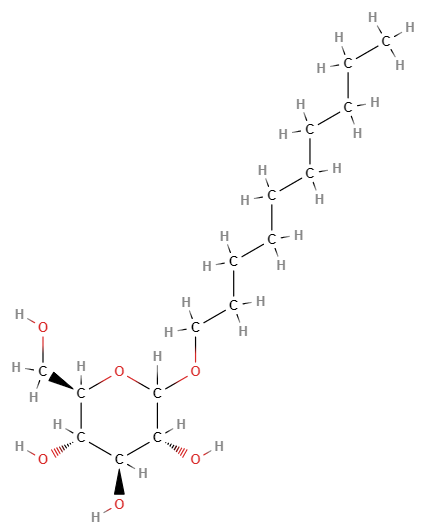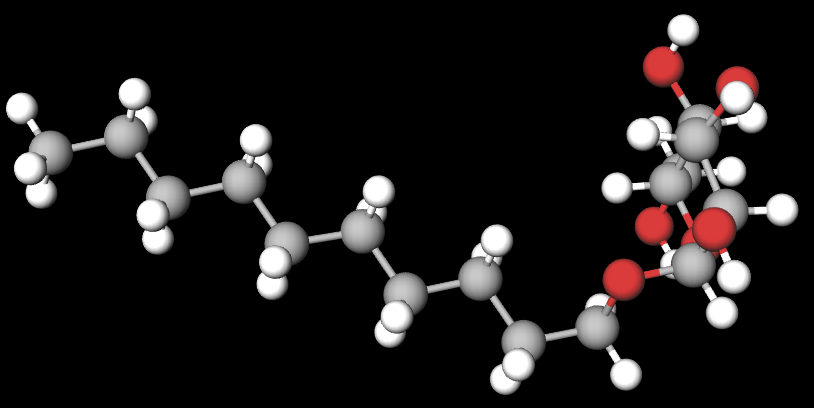Coco Glucoside is a chemical compound derived from plants, usually coconut. It occurs as a colourless viscous liquid with good solubility in water.
What it is used for and where it is used
Cosmetics
It is a non-ionic surfactant (removes dirt particles) and it is used as a foaming agent and emulsifier, face masks, cleansing milk, baby soaps.
Cleanses the hair and increases combability.
In the Duhring test it emerges as the least irritating of all surfactants.
Medical
Used in acne treatment,
The most relevant studies on the subject have been selected with a summary of their contents:
Coco Glucoside studies
Formula and characteristics are similar to Decyl glucoside. The most substantial differences are viscosity and pH
| Viscosity | pH |
| Coco-Glucoside | 2500-6000 (mPa•s, 20℃) | 7.0-10.0 |
| Decyl Glucoside | 1000-2500 (mPa•s, 20℃) | 11.5-12.5 |
______________________________
Decyl glucoside (Caprylyl/capryl glucoside) is a chemical compound, derived from plants, usually palm trees. It occurs as a straw-yellow liquid with good solubility in water.

What it is used for and where it is used
Non-ionic, stabilising, PEG-free alkyl polyglucoside surfactant, designed for nanoparticle stabilisation (1). Stable foaming agent, rapidly biodegradable, low toxicity, low viscosity, low level of sodium salts. Has good alkali tolerance and electrolyte tolerance.
Used in cosmetics in liquid soaps and shampoos as a second surfactant with excellent caustic stability and solubility in highly concentrated salt, alkaline and surfactant solutions. Generally magnesium oxide and magnesium are present in amounts ranging from 100 ppm to 400 ppm.
Other uses:
- chemical industry
- oil extraction industry
- pesticide industry
Safety
The oestrogenicity of decyl glucoside was confirmed as a non-endocrine disrupting surfactant by its preparation method using zeolite catalysts. Its oestrogenicity was estimated using the E-assay method. Decyl glucoside was synthesized by direct glucosidation from D-glucose with 1-decanol. The conversion and yield were improved by increasing the amount of acid sites of the zeolite catalysts. Decyl glucopyranoside is more hydrophilic than nonylphenol and has a high wettability. Decyl glucopyranosides exhibited extremely lower proliferation of oestrogenic cells than nonylphenol. (2).
The Expert Group on Cosmetic Ingredient Control (CIR) evaluated the safety of 19 alkyl glucosides as used in cosmetics and concluded that these ingredients are safe in current use practices and concentrations when formulated to be non-irritating. Most of these ingredients function as surfactants in cosmetics, but some have additional functions such as skin conditioning agents, hair conditioning agents or emulsion stabilisers. The Panel reviewed the available animal and clinical data on these ingredients. As glucoside hydrolases in human skin are able to break down these ingredients to release their respective fatty acids and glucose, the Panel also reviewed CIR reports on the safety of fatty alcohols and were able to extrapolate from previous data to support their safety (3).
Decyl Glucoside studies
Typical optimal commercial product characteristics Caprylyl/Capryl Glucoside
| Appearance | Pale yellow liquid |
| Viscosity | 1000-2500 (mPa•s, 20℃) |
| Density (g/cm3), 25°C | 1.07-1.09 |
Boiling Point
| 476.5±45.0 °C at 760 mmHg |
Flash Point
| 242.0±28.7 °C |
|
|
C chain distribution C6 C8 C10 (base substance: Fatty alcohol) | 0%~1% 53%~63% 33%~43% |
| PSA | 99.38000 |
| LogP |
|
| pH | 11.5-12.5 |
Free Alcohol (wt %)
| ≤1.0 |
Vapour Pressure
| 0.0±2.7 mmHg at 25°C |
Index of Refraction
| 1.512 |
Viscosity (mPa·s), 20°C
| 300-400 (at 20°C) |
Specific Gravity at 25°C [g/cm3] | 1.08-1.12 |
Water (wt %)
| 47-50 |
| DP | 1.3-1.5 |
Surface tension (mN/m), 25°C, 0.1%
| 28-30 |
Microorganism (CFU/g)
| ≤10 |
Ash(wt%)
| ≤3.0 |
- Molecular Formula C16H32O6
- Molecular Weight 320.22 g/mol
- Exact Mass 320.219879
- CAS : 68515-73-1 141464-42-8 54549-25-6
- UNII
- EC Number 500-220-1
- DSSTox Substance ID DTXSID70872594
- MDL number
- PubChem Substance ID
- IUPAC (3R,4S,5S,6R)-2-decoxy-6-(hydroxymethyl)oxane-3,4,5-trio
- InChI=1S/C16H32O6/c1-2-3-4-5-6-7-8-9-10-21-16-15(20)14(19)13(18)12(11-17)22-16/h12-20H,2-11H2,1H3/t12-,13-,14+,15-,16?/m1/s1
- InChl Key JDRSMPFHFNXQRB-IWQYDBTJSA-N
- SMILES CCCCCCCCCCOC1C(C(C(C(O1)CO)O)O)O
- SCHEMBL 43196
Synonyms :
- Caprylyl/Capryl Glucoside
- Alkyl Polyglycoside
- APG
- Glucoside, decyl
- Decyl D-glucoside
- Decyl D-glucopyranoside
- Capryl glycoside
- decyl-d-glucoside
- (3R,4S,5S,6R)-2-decoxy-6-(hydroxymethyl)oxane-3,4,5-triol
- (3R,4S,5S,6R)-2-(Decyloxy)-6-(hydroxymethyl)-tetrahydro-2H-Pyran-3,4,5-triol
References______________________________
(1) Kovačević AB, Müller RH, Keck CM. Formulation development of lipid nanoparticles: Improved lipid screening and development of tacrolimus loaded nanostructured lipid carriers (NLC). Int J Pharm. 2020 Feb 25;576:118918. doi: 10.1016/j.ijpharm.2019.118918.
(2) Chung KH, Kim H, Park YK, Kim BH, Kim SJ, Jung SC. Decyl Glucoside Synthesized by Direct Glucosidation of D-Glucose Over Zeolite Catalysts and Its Estrogenicity as Non-Endocrine Disruptive Surfactant. J Nanosci Nanotechnol. 2019 Feb 1;19(2):1172-1175. doi: 10.1166/jnn.2019.15900.
(3) Fiume MM, Heldreth B, Bergfeld WF, Belsito DV, Hill RA, Klaassen CD, Liebler D, Marks JG Jr, Shank RC, Slaga TJ, Snyder PW, Andersen FA. Safety assessment of decyl glucoside and other alkyl glucosides as used in cosmetics. Int J Toxicol. 2013 Sep-Oct;32(5 Suppl):22S-48S. doi: 10.1177/1091581813497764.
![]() Coco Glucoside
Coco Glucoside 






